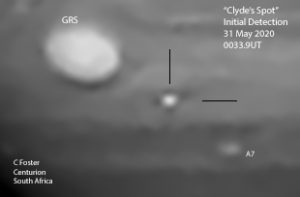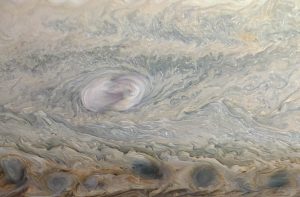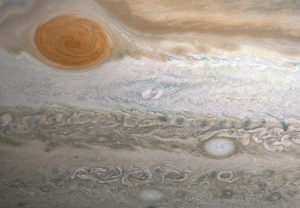Clyde Foster, 2023 March 22
As some of you are aware, I was credited with the discovery of a new storm outbreak on Jupiter on 31 May 2020 which quickly became known informally as “Clyde’s Spot” amongst both amateurs and professionals in the planetary community. What was notable was the relatively rare occurrence of such outbreaks that have been observed in this region, Jupiter’s South Temperate Belt, and even more so the fact that the NASA Juno spacecraft would sweep over the storm two days later, capturing amazing images of the outbreak. Thanks to the resulting NASA press releases (“Clyde’s Spot on Jupiter” and “Juno returns to Clyde’s Spot”), “Clyde’s Spot” attracted quite extensive media and public interest. As much as my primary focus is on enjoying my planetary imaging, and contributing to the Planetary Science community, this was certainly some nice recognition of what I am doing.


(left) Clyde Fosters’ image of the spot. (right) NASA/JPL-Caltech/SwRI/MSSS/Kevin M. Gill
In the nearly two years since, headed by members of the Planetary Science group at the University of the Basque in Spain, Clyde’s Spot has become extensively researched. This has been thanks to the amazing results produced from the NASA Juno PJ27, PJ33 and PJ34 flybys, Hubble Space Telescope imaging, NASA IRTF imaging, images from other professional facilities, and, not least of all extensive amateur high resolution imaging. Needless to say, I have tracked and imaged the development of Clyde’s Spot on every/ possible opportunity over this period.
Dr Ricardo Hueso and Peio Inurrigarro (Clyde’s Spot has been the primary focus of his PhD studies) have been the key drivers for the research in Spain.
I am delighted to say that the research has been captured in an extensive paper (+-50 pages, with an additional +-12 pages of supplementary information), and I received notification on 21 March, that the paper, following extensive peer review, has been accepted for publication in the respected Icarus journal. I am honoured to be included as a co-author for the paper, alongside some highly esteemed professional planetary scientists, and proud to have ASSA as my primary affiliation.

Above: NASA/JPL-Caltech/SwRI/MSSS/Kevin M. Gill
During the (lengthy and intense!) peer-review process, I always had a concern that there would be pressure applied to replace the term “Clyde’s Spot” with a more “scientific” term, based on classical Jovian notation. I am delighted to say that the term was readily accepted by the reviewers, and in doing so, I am proud to say that “Clyde’s Spot” has now been accepted into formal Jovian scientific literature. As an amateur astronomer, I am not sure if it gets much better than that!
